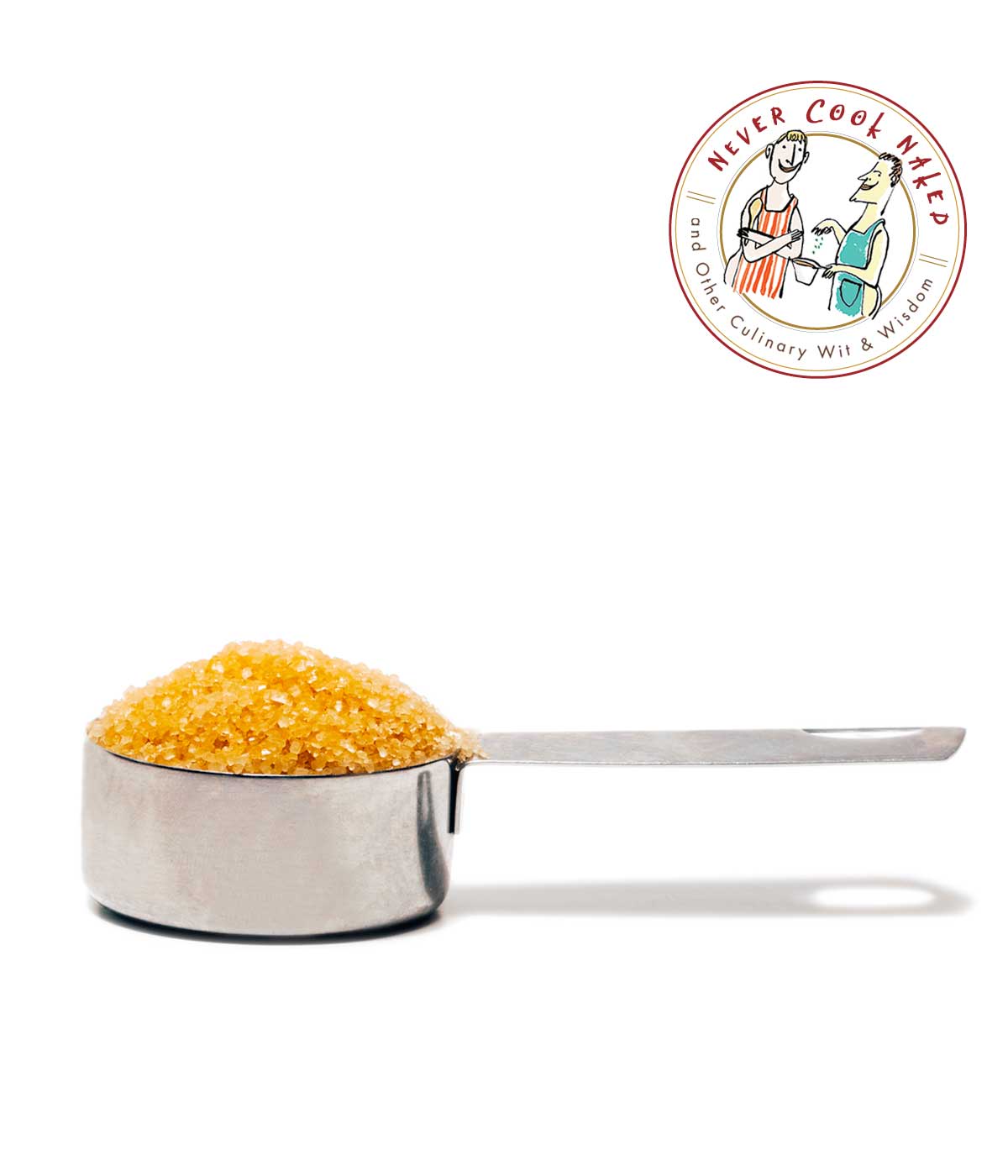
Jump To
Measuring Accuracy
Dear Never Cook Naked Guys: Every once in a while I read a recipe that calls for a “heaping” cup of this or a “scant” tablespoon of that. What are they talking about?—Ill-Measured
Dear Ill: You’d never read a German or Italian or French recipe that calls for a scant cup of flour. It would ask for 220 grams of flour. Or 230 grams. In other words, it would call for precisely the amount you need. Precisely.
We here in the good, ole U. S. of A. still bake and cook in cups and spoons. (Just be glad we’ve moved away from rods and hogsheads.) People elsewhere weigh. We dip. That’s what they did when they measured ingredients back in the day of Grandma. And Great Grandma. And Methuselah. And it’s not going to change anytime soon.
Practically speaking, these terms mean there was nothing between the 2/3 cup and 3/4 cup in someone’s measuring set back in the Fanny Farmer days. “Heaping” means that there’s a heaping mound of flour (or whatever ingredient) on top of the measuring cup. It’s a little more than “rounded.” “Scant” means that there’s a little declivity in the measuring cup.
So where does that leave us? With studied vagueness. But take heart. All this hoopla doesn’t mean much of anything when you’re frying, sautéing, roasting, and braising. A little extra oil not ruin the dish. But baking is about fussiness, aka chemistry. Chocolate cakes and cookies that call for such inexact measures can come out less than perfect.
Want to Save This?
Our advice? When you see “heaping” and “scant,” put down the recipe and instead find one that’s more precise. (May we suggest you seek a recipe from our favorite site?) And invest in a kitchen scale. It’s a lot cheaper than immigrating to Europe.
Our very clever, very clothed Never Cook Naked columnists are at your disposal, able to troubleshoot everything from questionable table etiquette to tricky cooking techniques (as well as, natch, proper cooking attire). Ask us your question in a comment below!
Originally published April 19, 2012








